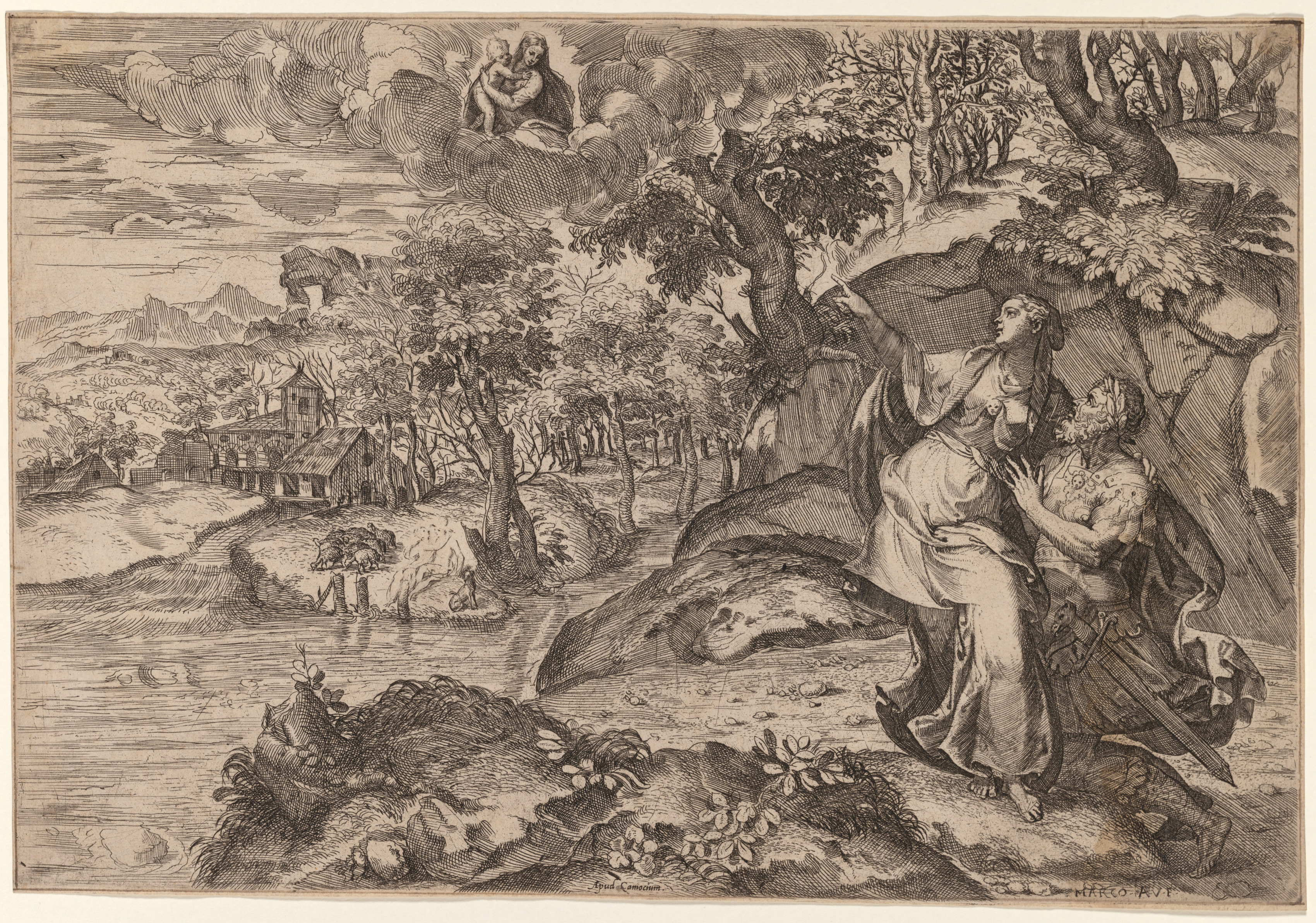The Cleveland Museum of Art
Collection Online as of April 27, 2024

Augustus and the Tiburtine Sibyl
1570s
(Italian, c. 1537–d. after 1586)
Sheet: 27 x 39.7 cm (10 5/8 x 15 5/8 in.)
Location: not on view
Did You Know?
The story portrayed in this etching was understood as a turning point from paganism to Christianity during the Roman era.Description
The Roman Emperor Augustus and the Tiburtine Sybil (a Roman prophetess) embrace in a lush landscape. A 12th-century legend told that Augustus consulted the sybil to ask if he should be deified after his death. He received a vision of the Virgin and Child, depicted above, which swayed him away from his pagan beliefs. Del Moro’s effortless blend of narrative and landscape was typical of works by artists from the region around Venice.- James Bergquist, Newton, MASeptember 4, 2018the Cleveland Museum of Art
- Meyer, Julius, ed. Allgemeines Künstler-Lexikon. 3 vols. Leipzig, 1872-1885; Vol 2 p. 41, no. 4, state II/IIReed, Sue Welsh, and Richard W. Wallace. Italian Etchers of the Renaissance & Baroque. Boston, Mass: Museum of Fine Arts, 1989. p. 35-37
- {{cite web|title=Augustus and the Tiburtine Sibyl|url=false|author=Marco Angolo del Moro|year=1570s|access-date=27 April 2024|publisher=Cleveland Museum of Art}}
Source URL:
https://www.clevelandart.org/art/2018.209